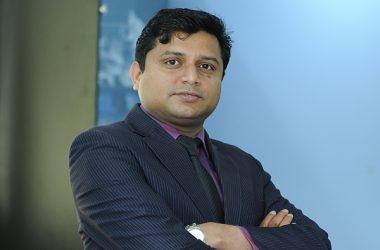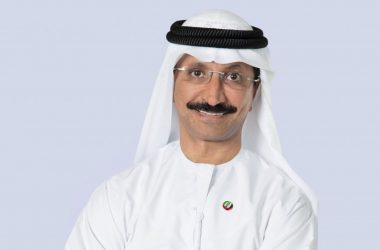 Every once in a while, there comes an organisation that challenges the way other organisations have been dealing with strapped economies, increasing competition and shrinking revenue margins. Arkan Building Materials is definitely one of them.
Every once in a while, there comes an organisation that challenges the way other organisations have been dealing with strapped economies, increasing competition and shrinking revenue margins. Arkan Building Materials is definitely one of them.
Meet Dmitri Stephanou,VP Information Systems, at Arkan Building Materials who says that the support extended towards IT from the senior management at the organisation rivals that of any he has seen in his career.
As the construction industry in the region suffered the effects of a drawn out recession, the senior management at Arkan Building Materials, an integrated building materials manufacturer, decided to review the company’s operations. As the management reviewed processes associated with sales and engineering, they decided that investing in a technology refresh would not only help the organisation become leaner but it would also make processes more efficient.
“Typically, when everything is going well, sales are healthy and profits reeling in, most companies do not see the need to optimise and enhance existing IT systems. So when the revenue fell and competition continued to increase, we realised we needed to do a better job of understanding costs and making quicker decisions on sales prices to implement robust competitive strategies,” says Stephanou.
According to him, while the recession serves an opportunity for an organisation to enhance and better existing work flows, it also frees up investments that would previously be used for expansion and marketing to be invested in strategic technology deployments.
Basic blueprint
And that is how Arkan Building Materials, an organisation owned by the General Holding Corporation (an entity wholly owned by the Government of Abu Dhabi to promote sustainable industrial activity in the Emirates), decided to invest in a complete technology refresh.
The primary business imperative, according to Stephanou, was to use technology to enable real time decision making capabilities, based on visibility into material acquisitions and cost structures.
“Previously, it took several weeks or months to present the necessary reports. By that time, markets dynamics would have changed, meaning that the reports didn’t aid strategic decision making. The driving need for real time visibility and action was not very urgent when the business and global economy was doing well, and nobody felt the need to change a thing, things change when its economic climate changed” he says.
Besides real-time reports, the business also wanted to provide centralised access to services and applications efficiently. There was also the need to reduce costs associated with storage and cooling of servers on the agenda.
Naturally, a complete technology refresh required a detailed and prolonged planning phase, during which the company identified elements that could aid robust deployment.
Stephanou explains, “The key requirement from my end was the scheduling of weekly steering committee meetings, and I am proud to say that our CEO was involved and present across 99% of these meetings. This meant that any escalations points were dealt with on-the-spot, making the turnaround cycle extremely efficient.”
Stephanou and his team also spent considerable amount of time deciding on the vendors and the partners that they wanted to work with to help meet the requirements they had identified. The team at Arkan chose to work with partners that not only had experience with large scale implementations across the industry vertical, but could leverage best practices and deliver what the company calls a “templatised” solution.
“We made it very clear that whatever solution we chose would not be changed. Instead, we would change our requirements and processes to meet the best practises of the vendor or partner. Organisations need to understand that they are not smarter than the companies that invest mammoth amounts of money and time to develop these solutions, and that they would be better off embracing those solutions rather than tweaking or altering them,” he adds.
When choosing the partners to help them with the implementation, Arkan considered the partner organisation’s ability to manage the entire implementation as one single vendor. “We wanted a single point of contact- they manage the project, any problems or any other vendors involved with multiple components of the delivery,” he says.
According to Stephanou, the success of implementation depends on the ability to identify what an organisation wants to achieve right from the beginning and its ability to communicate these goals to the vendors and partners. Most importantly, these goals must be included in the contract to make them binding.
Starting from scratch
“We started with deploying an energy efficient blade platform, and VMWare as the foundation on which all our centralised applications were subsequently implemented. These included a highly scalable and redundant MS Exchange solution, a SharePoint farm, SAP Business Intelligence and a number of integration points between SAP and the production control systems, as well as time attendance and truck yard management. Last but not least, we implemented Citrix as the remote connectivity solution allowing all our business units to access our centralised application offerings,” explains Stephanou.
He adds that part of the reason the company chose SAP, as opposed to Microsoft or Oracle which also scored well on the applications front, was the ability to provision this integration element.. “We wanted to deploy the ERP applications, integrated with the production line, control systems and business intelligence tools, all at the same time. We felt we needed to do this for maximum ROI. We communicated the need for a one shot end-to-end deployment to the vendors, and found that only SAP could effectively satisfy this need,” says Stephanou.
Anticipating the need for clear change management processes, Stephanou and his team adopted a two pronged approach to team training.
“On one end, we contractually requested our implementation partner to include an Arabic speaking trainer, who we carefully selected from a number of candidates to ensure a good culture fit with our organisation. This trainer participated in the entire project life cycle, guiding the users throughout the project ensuring maximum knowledge transfer, acceptance and adoption of the new SAP system,” he says.
The other end of this two pronged approach focused on clear top down messaging that no changes would be made to the solution or deployment, unless they were absolutely necessary or were seen to enhance the implementation further.
“Out of the 70 requests that were submitted to the steering committee only six were approved. The approved changes are now part of the ‘templatised’ solution, which is an SAP certified solution. This brings me back to the process of deciding on SAP, and the fact that we wanted to implement not only an industry specific solution, but one that could be certified by the vendor to reduce any post deployment management issues when it makes changes to code, does regular updates or creates new releases. We consciously worked with both Fujitsu, our infrastructure partner for this implementation, and SAP to ensure that the certification process was complete before we went live,” says Stephanou.
On the other hand, the challenge with both the VMware and Citrix implementations was that the company had recruited a lot of new people, none of who had prior experience with these technologies and did not know how to put them together with the SAP implementation.
“The key to addressing this was to work with vendors who could support career development, who could be good team players- not only have know how and knowledge but could also sit shoulder to shoulder with our employees and school them on the systems and their underlying technology to help them build the expertise to support and maintain a robust infrastructure even after the vendors finished their task and left. This is the primary reason behind our decision to work with both VMware and Citrix ,” he explains.
The continuous process of knowledge transfer also gave the organisation and its many stakeholders the peace of mind that in the future any recurring problems could be handled competently by the organisation’s own employees.
Step forward
After the implementation , which was conducted over a span of a little over five months, (two months on VMware and Citrix and little over three months on SAP) Stephanou says that the organisation is now ready for the future.
“We are working on adding more modules to the ERP environment and integrating it with new business units. These will include the assimilation of three new plants that were not earlier part of the Arkan family. We are also internally working, studying and developing a proof of concept on using Citrix platforms on BlackBerry devices to access some of our key applications such as the ERP one. On the same front, we are also involved in a dialogue with Fujitsu, who were our implementation partners for the SAP project they have already developed a real application on BlackBerry to access the ERP apps. We currently, are studying the solution,” he says.
Stephanou concludes by attributing the organisation’s ability to plan and execute the implementation of a robust infrastructure and industry standard ERP solution in record winning time to the 20 member IT team at the organisation.
With an IT team whose capability speaks for itself, senior management that is headed by a former IBM executive and now a state of the art infrastructure, Arkan Building Materials has it all.





